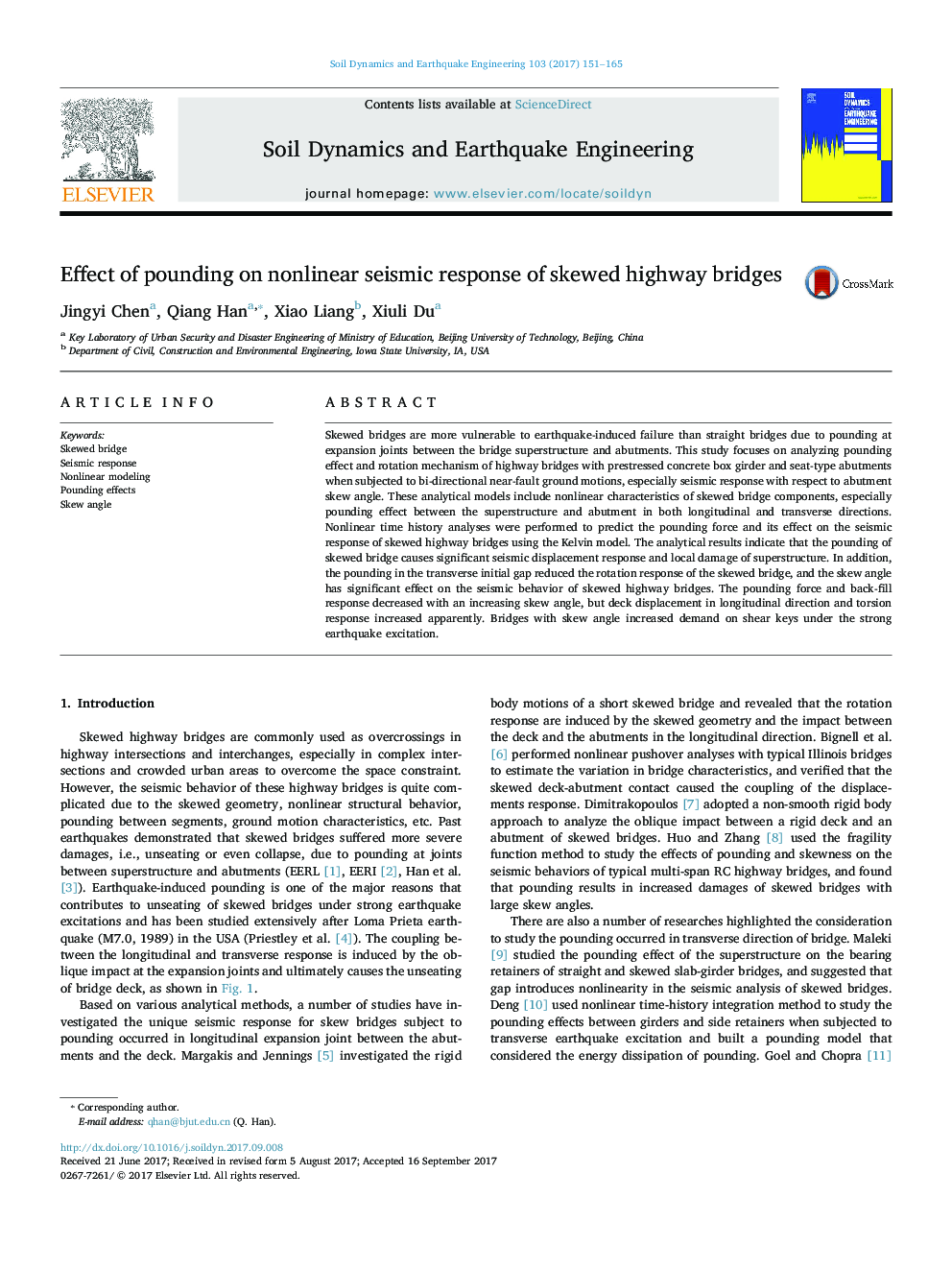| Article ID | Journal | Published Year | Pages | File Type |
|---|---|---|---|---|
| 4926970 | Soil Dynamics and Earthquake Engineering | 2017 | 15 Pages |
Abstract
Skewed bridges are more vulnerable to earthquake-induced failure than straight bridges due to pounding at expansion joints between the bridge superstructure and abutments. This study focuses on analyzing pounding effect and rotation mechanism of highway bridges with prestressed concrete box girder and seat-type abutments when subjected to bi-directional near-fault ground motions, especially seismic response with respect to abutment skew angle. These analytical models include nonlinear characteristics of skewed bridge components, especially pounding effect between the superstructure and abutment in both longitudinal and transverse directions. Nonlinear time history analyses were performed to predict the pounding force and its effect on the seismic response of skewed highway bridges using the Kelvin model. The analytical results indicate that the pounding of skewed bridge causes significant seismic displacement response and local damage of superstructure. In addition, the pounding in the transverse initial gap reduced the rotation response of the skewed bridge, and the skew angle has significant effect on the seismic behavior of skewed highway bridges. The pounding force and back-fill response decreased with an increasing skew angle, but deck displacement in longitudinal direction and torsion response increased apparently. Bridges with skew angle increased demand on shear keys under the strong earthquake excitation.
Related Topics
Physical Sciences and Engineering
Earth and Planetary Sciences
Geotechnical Engineering and Engineering Geology
Authors
Jingyi Chen, Qiang Han, Xiao Liang, Xiuli Du,
